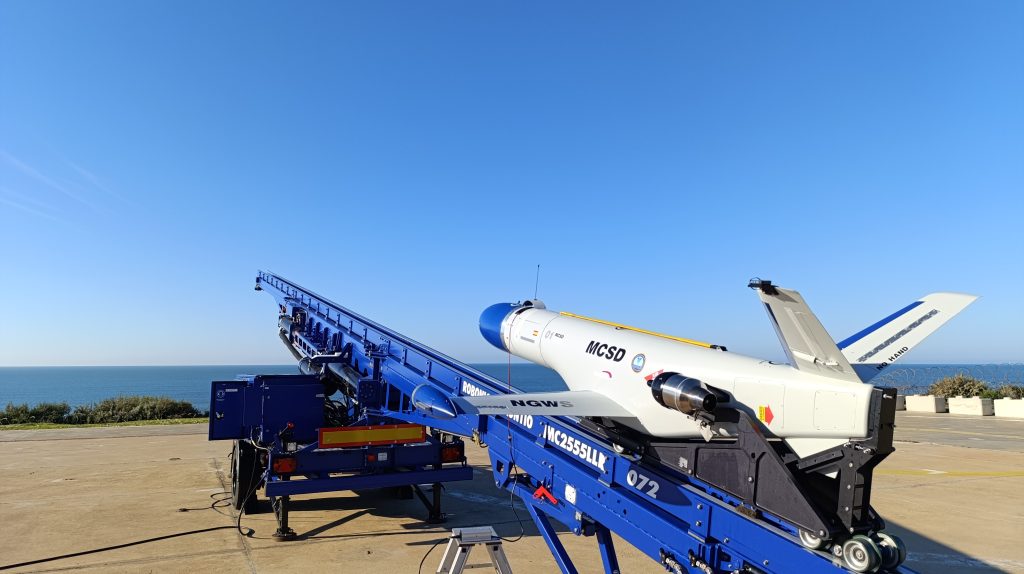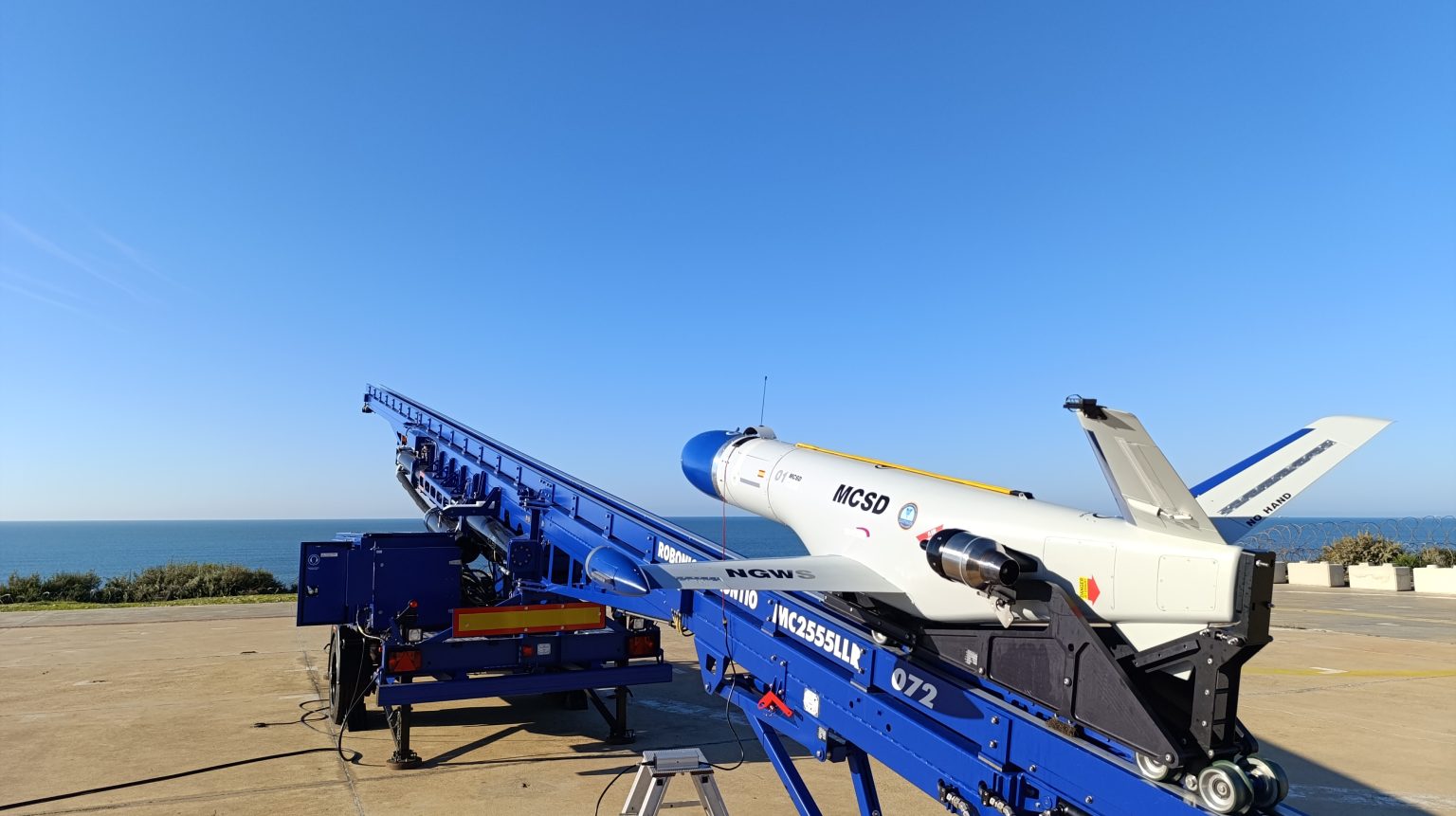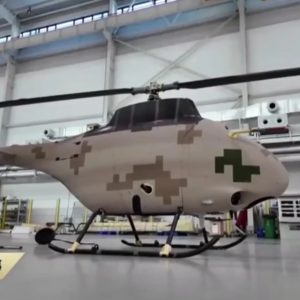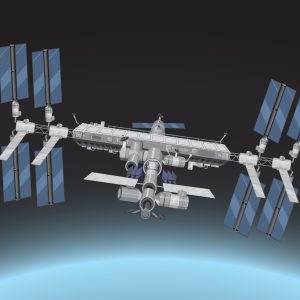
Spain’s SATNUS consortium has completed the third flight test campaign of the Future Combat Air System (FCAS) programme, validating its Manned-Unmanned Teaming & Common Systems Demonstrator and integrating the FCAS Next Generation Autonomy Computer. The latest trials mark a concrete step from lab concepts to flight-proven autonomy for Remote Carriers that will operate alongside Europe’s next-generation combat aircraft.
Key Facts
The SATNUS team — formed by GMV, Sener and Tecnobit–Grupo Oesía — used a modified target drone as the Manned-Unmanned Teaming & Common Systems Demonstrator (MCSD) for this third FCAS flight campaign. The platform flew both solo sorties and multi-ship missions, allowing engineers to exercise autonomous decision-making, coordinated manoeuvres and the full data chain between air and ground segments.
For the first time in the programme, several MCSD vehicles flew together in autonomous and coordinated formations. This allowed SATNUS to test the FCAS Next Generation Autonomy Computer in realistic operational profiles rather than isolated lab scenarios, tightening the feedback loop between software, sensors and the flight control system.
UAV Navigation–Grupo Oesía, acting as a key subcontractor, supplied the advanced flight control computer that underpins these Remote Carrier behaviours. Its technology enabled stable, synchronised autonomous flight across multiple air vehicles, while also supporting ground-based monitoring and control for safety and mission assurance [4].
Why the NGAC matters for FCAS Remote Carriers
The FCAS Next Generation Autonomy Computer sits at the heart of how future Remote Carriers will think, collaborate and react in contested airspace. Rather than acting as simple “missile trucks”, these autonomous assets will need to process large amounts of data, share information across the combat cloud and re-plan in real time under human supervision [1][7].
In practical terms, the NGAC manages navigation, mission execution and coordination between multiple unmanned aircraft. It must handle degraded GPS, electronic attack and dense threat environments while keeping human operators in the control loop instead of replacing them. Therefore, validating this computer in flight is central to proving that FCAS Remote Carriers can deliver effects without overwhelming pilots.
Moreover, the NGAC acts as the bridge between high-level mission intent and low-level flight control. Mission commanders will specify objectives, constraints and engagement rules, while the FCAS Next Generation Autonomy Computer translates those directions into trajectories, sensor management and payload actions for each Remote Carrier. This division of labour is key to scaling up from one or two loyal wingmen to large collaborative swarms.
As a result, every successful test campaign de-risks not only the hardware, but also the operational concepts for manned-unmanned teaming. Spain’s work through SATNUS in Pillar 3 of the NGWS/FCAS framework directly supports the maturation of Remote Carrier technology and its eventual integration into European air forces [4][11].
Third flight campaign: from solo sorties to coordinated formations
The latest campaign built on earlier SATNUS trials by moving from basic flight validation to complex, multi-ship autonomous missions. Initial sorties focused on qualifying the MCSD platform and ensuring safe integration of the FCAS Next Generation Autonomy Computer with avionics, datalinks and ground systems. Once that foundation was secure, the team progressed to coordinated missions with several MCSDs flying together.
During these missions, each drone followed its own trajectory while remaining aware of the others and of the manned assets they are designed to support. The NGAC handled formation management, separation and timing, while the flight control computer from UAV Navigation–Grupo Oesía executed the commands with high precision. Meanwhile, the ground segment monitored the full formation in real time, providing an extra safety layer and additional telemetry for post-flight analysis.
“A key achievement was the success of end-to-end testing of functional chains on board and on land for multi-platform operations,” SATNUS noted after the campaign, underlining that the team is now exercising the same digital threads that will later link Remote Carriers, manned fighters and the broader combat cloud.
SATNUS consortium statement
In addition, the campaign allowed engineers to stress-test the interplay between autonomy software, communications and sensor payloads. Losing a link, experiencing timing delays or injecting simulated failures is easier to manage when one drone flies. Doing the same across multiple MCSDs in formation pushes the FCAS Next Generation Autonomy Computer closer to the complexity it will face when supporting a future New Generation Fighter and its escorts.
Role of UAV Navigation–Grupo Oesía in the testbed
UAV Navigation–Grupo Oesía brings decades of experience in certifiable autopilot systems for demanding military and civil applications. In the SATNUS context, the company supplies the flight control computer that executes the guidance commands coming from the FCAS Next Generation Autonomy Computer, while also managing safety-critical functions such as attitude control, envelope protection and emergency procedures [0][5].
This architecture lets the NGAC focus on higher-level autonomy and teaming logic. At the same time, it gives test teams a robust, well-understood base layer for flight control, making it easier to attribute anomalies to mission software or to platform behaviour. Consequently, every hour of flight time generates cleaner, more actionable data for the engineers refining the next wave of autonomy algorithms.
The company’s contribution also extends beyond code. Through close cooperation with SATNUS, UAV Navigation–Grupo Oesía supports mission planning, integration and post-flight evaluation, helping to shape how Remote Carriers will actually be tasked and supervised in future FCAS operations. That end-to-end view is critical if autonomy is to move from impressive demos to dependable combat capability.
Spain’s contribution to a fragile European flagship
The FCAS framework has often made headlines for industrial disputes and shifting political priorities between France and Germany [2][6]. Against this backdrop, Spain’s steady investment in Remote Carrier and manned-unmanned teaming technologies through SATNUS stands out as a concrete, quietly progressive contribution to Europe’s future airpower.
Pillar 3 of NGWS/FCAS, which focuses on Remote Carriers, lists Airbus Germany as prime contractor and MBDA as main partner, with SATNUS providing the Spanish industrial backbone for this segment [11][20]. By advancing MCSD and the FCAS Next Generation Autonomy Computer, the consortium helps ensure that Europe will field not only a new fighter, but also the networked unmanned systems that give that fighter real combat mass.
At the programme level, FCAS aims to create an integrated “system of systems” in which a New Generation Fighter, Remote Carriers, legacy platforms and an air combat cloud work together as one architecture [1][8][17]. Remote Carriers, launched from platforms such as A400M, will fly in close cooperation with manned aircraft and support pilots in surveillance, strike and electronic warfare roles [3][9]. The NGAC is the autonomy engine that will allow these assets to operate with initiative while remaining under human control.
For defence planners, this matters because massed, attritable Remote Carriers can help offset shrinking combat aircraft fleets and rising unit costs. When autonomy works, a relatively small number of high-end fighters can orchestrate a larger force package of unmanned systems, saturating defences, probing adversary responses and preserving scarce pilots for the most demanding tasks.
From risk reduction to operational concepts
Today’s SATNUS campaigns remain firmly in the risk-reduction phase. They test software, validate architectures and build trust in safety cases. Yet each step also feeds directly into how air forces will write tactics, techniques and procedures for FCAS-era operations. Questions such as how many Remote Carriers a single pilot can supervise, or how tasking will flow through the combat cloud, depend on hard data from precisely these kinds of experiments.
In this sense, the FCAS Next Generation Autonomy Computer is not just another box on a wiring diagram. It is a focal point where software engineering, human factors, electronic warfare resilience and campaign analysis intersect. The more mature NGAC becomes, the more credible European concepts of operations for manned-unmanned teaming will look to partners and potential adversaries alike.
Defence Agenda has previously examined how new defence companies frame autonomy, software and speed as core brand attributes in the “platformisation” of defence [3]. SATNUS and UAV Navigation–Grupo Oesía now demonstrate what that thinking looks like when translated into real flight hours on a demanding multinational programme.
What comes next for European airpower autonomy
The third SATNUS campaign is not the end state for FCAS Remote Carriers. Instead, it marks a transition point from proving that the FCAS Next Generation Autonomy Computer can fly, to showing that it can deliver operational value in larger, more complex scenarios. Future campaigns will likely add more vehicles, richer payloads and tighter integration with manned platforms and the wider combat cloud.
At the same time, debates over FCAS governance, budgets and timelines will continue in Paris, Berlin and Madrid [2][36][45]. Technical progress on Remote Carriers and autonomy does not remove those pressures. However, it does strengthen the argument that, even if the fighter element evolves or is re-scoped, Europe still needs a robust framework for collaborative combat aircraft, drones and networks.
For now, the message from Madrid is clear: Spain intends to remain a serious player in sixth-generation air combat. By investing in testbeds like the MCSD and in critical systems such as the FCAS Next Generation Autonomy Computer, SATNUS and its partners are ensuring that Spanish industry is present not just in the political communiqués, but also in the flight-test logs that will define tomorrow’s airpower.
Further reading & references
[1] Airbus – Future Combat Air System (FCAS) overview. https://www.airbus.com/en/products-services/defence/future-combat-air-system-fcas
[2] Breaking Defense – With a European next-gen fighter program in doubt, what would an FCAS collapse look like? https://breakingdefense.com/2025/10/with-a-european-next-gen-fighter-jet-program-in-doubt-what-would-an-fcas-collapse-look-like/
[3] Defence Agenda – The changing face of defence branding. https://defenceagenda.com/changing-face-of-defence-branding/
[4] UAV Navigation – SATNUS completes third FCAS flight campaign validating Remote Carrier Next Generation Autonomy Computer. https://www.uavnavigation.com/company/news-and-events/satnus-completes-third-fcas-flight-campaign-validating-remote-carrier-next
[5] UAS Weekly – SATNUS completes third FCAS campaign validating NGAC autonomy for Remote Carriers. https://uasweekly.com/2025/11/18/satnus-completes-third-fcas-campaign-validating-ngac-autonomy-for-remote-carriers/
[6] Reuters – Spain stands by FCAS fighter jet project despite Franco-German bickering. https://www.reuters.com/business/aerospace-defense/spain-stands-by-fcas-fighter-jet-project-despite-franco-german-bickering-2025-08-28/
[7] Airbus – Manned-Unmanned Teaming and Remote Carriers. https://www.airbus.com/en/newsroom/stories/2020-10-manned-unmanned-teaming-and-remote-carriers-transcending-individual-assets
[8] Future Combat Air System entry. https://en.wikipedia.org/wiki/Future_Combat_Air_System
[9] Airbus – Remote Carrier demonstrator released and operated from flying A400M. https://www.airbus.com/en/newsroom/press-releases/2022-12-remote-carrier-demonstrator-released-and-operated-from-flying-a400m
[11] Defence Archives – Quo Vadis, FCAS? https://defensearchives.com/news/quo-vadis-fcas/
[20] Farnborough Aerospace Consortium – FCAS programme overview. https://www.fac.org.uk/fcas
[36] Financial Times – Berlin and Paris discuss scrapping joint fighter to focus on air “combat cloud”. https://www.ft.com/content/e0cc4893-d1c3-45a4-9e3e-d35cedd4b46d
[45] Reuters – Berlin and Paris discuss scrapping plan to jointly build fighter jet. https://www.reuters.com/business/aerospace-defense/berlin-paris-discuss-scrapping-plan-jointly-build-fighter-jet-ft-says-2025-11-17/












